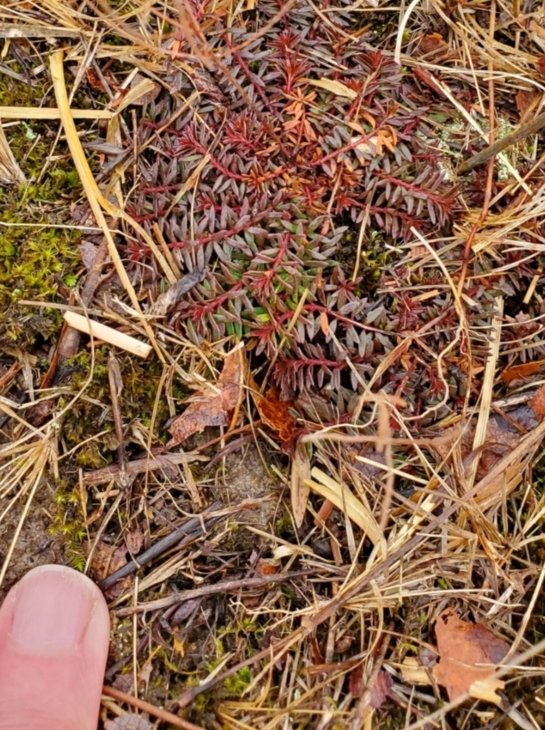
Slender Pinweed in winter. Note maroon tint of leaves
Slender Pinweed: A Plant to Look for in Winter
by Edie Starbuck
Plant photos courtesy of the author
Here is one for tiny plant fans; Lechea tenuifolia or Slender Pinweed. Though the summer flowering stems may reach 35 cm according to the revised edition of “Flora of Missouri” (Yatskievyck, 1999), they are usually much shorter, and with their small slender leaves and lack of showy flowers, they are easily overlooked, even in summer. Winter stems are generally less than 5 cm long and flat to the ground, so possibly even easier to overlook, but a beautiful winter treat for the plant enthusiast. They are a tiny splash of green, often with a maroon tint, growing in the brown winter landscape.
The winter stems are present from at least December through March in south-central Missouri. The stems stay flat against the ground, with 2-6mm long linear leaves that are alternate to whorled and closely-spaced along the stem. From a distance, they have the appearance of compound, fern-like leaves. The green color often has a maroon tint. The dead, dry flowering stems are likely still present and may give away their presence.
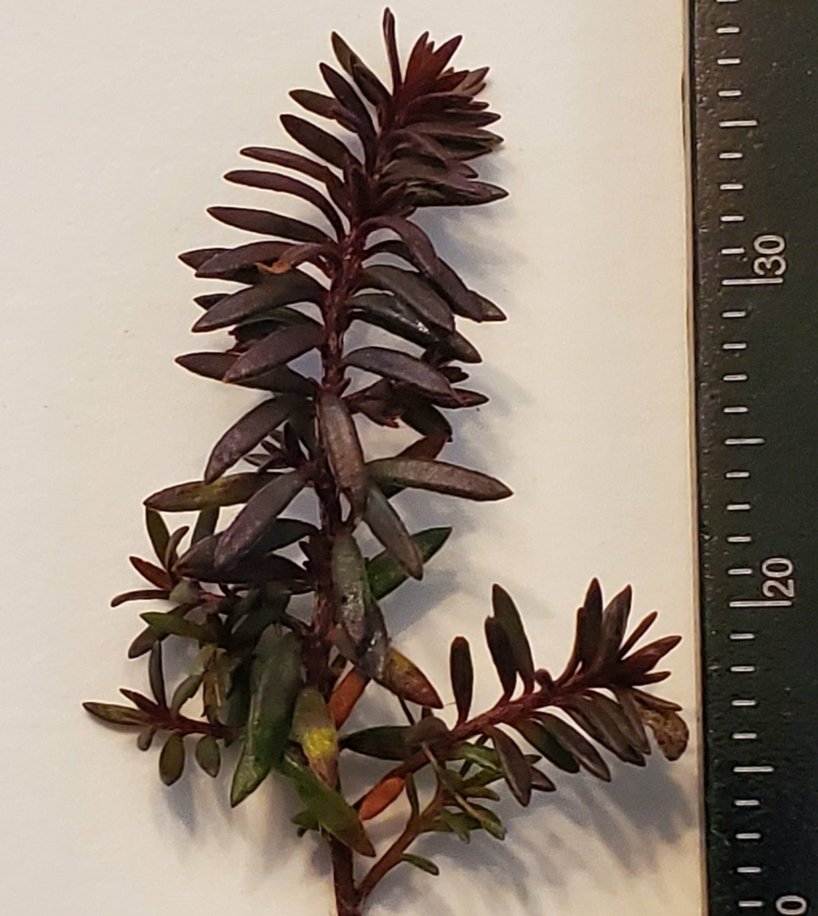
Detail of winter stems.
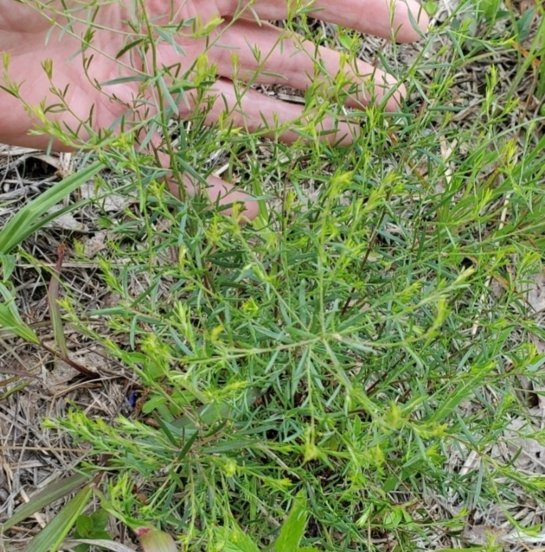
Summer flowering stems of an unusually large plant
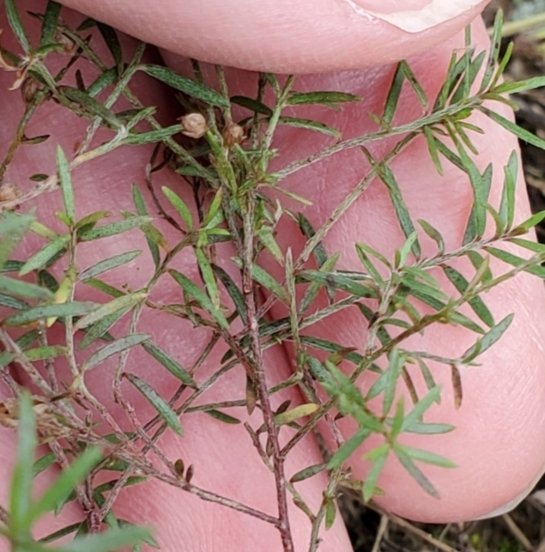
Detail of summer stems and leaves. Note that lower stems often turn brown or reddish brown
By May the green flowering stems are growing and are 8 to 35 cm long. Small (5-20 mm long) linear, sharply pointed leaves are alternately and sparsely found along the stems. The small flowers are never fully open and, in my experience, are difficult to tell from the ripening fruit without dissection. Seeds are present from June to November. According to Yatskievyck, this plant is found statewide, except for the western portion of the glaciated plains of northern Missouri.
In the family Cistaceae (Rockrose Family), these small plants are usually found in relatively dry areas and seem to thrive in spots where they have little competition. Favorite habitats include woodlands, rocky forests, open ridges, dry clearings and sandy fields. Keep an eye out for this interesting small plant on your winter walks!
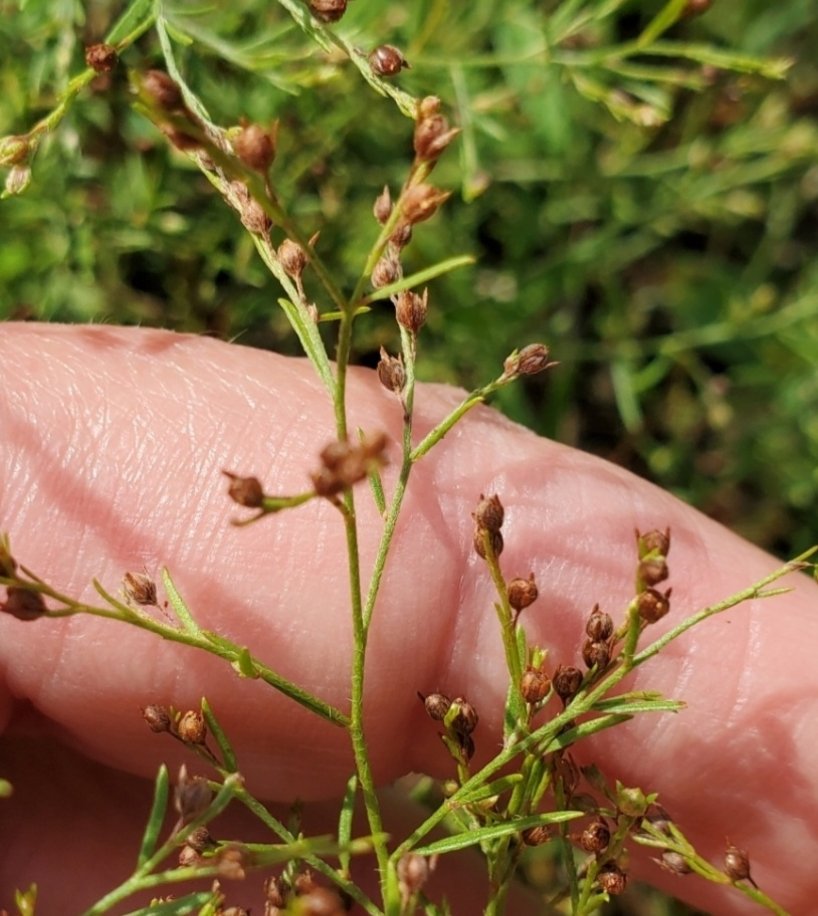
Flowers and fruit